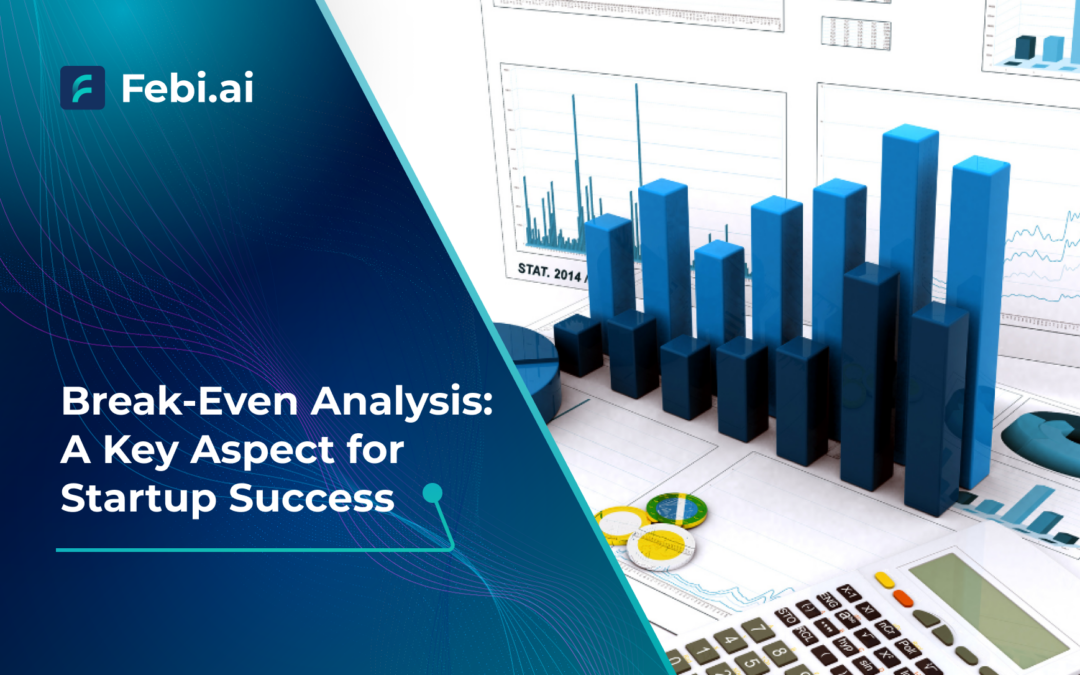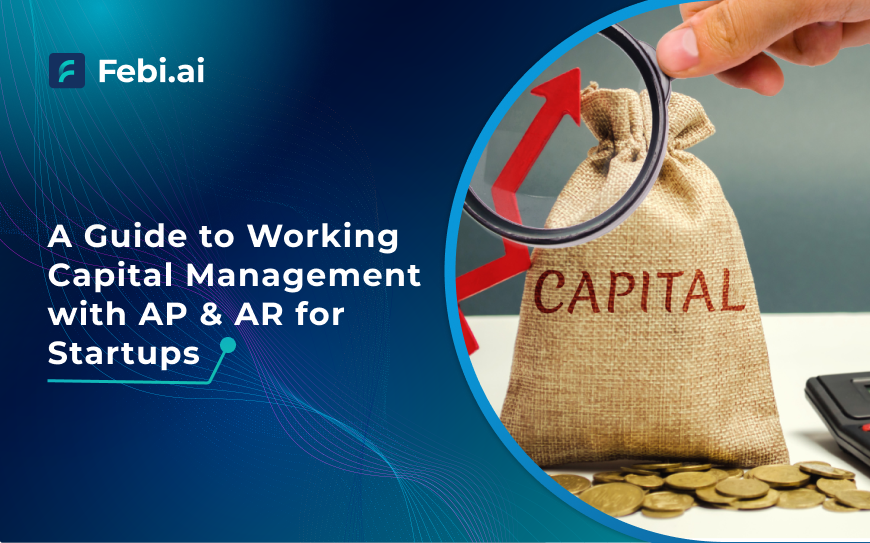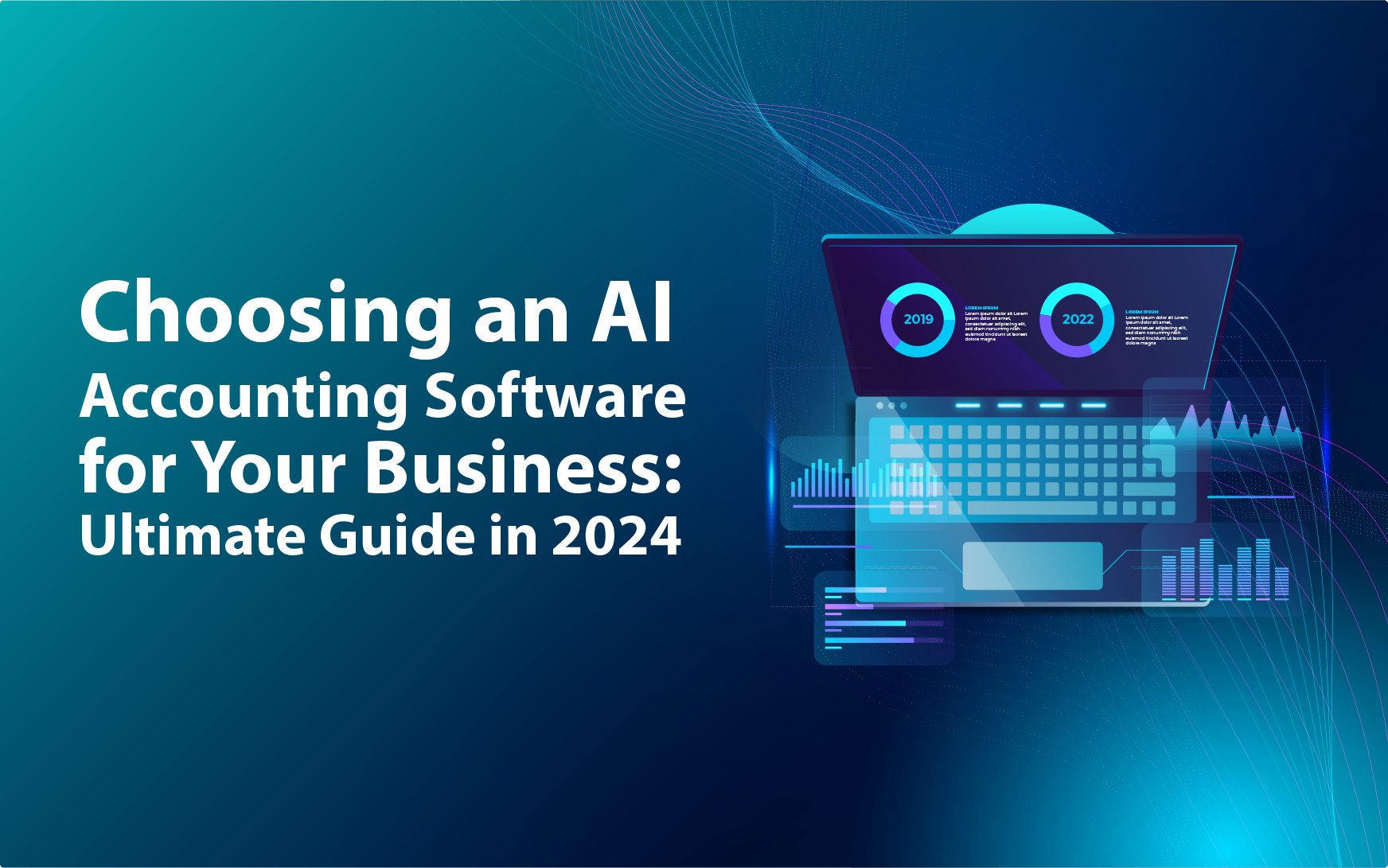Launching a startup is a thrilling journey filled with visions of innovation and dreams of unmatched success. Yet, it’s also a path riddled with financial uncertainties that can be daunting for even the most seasoned entrepreneur. To address these challenges and steer your business toward profitability and growth, one indispensable tool stands out—break-even analysis.
By learning and leveraging this financial concept, startup founders can make informed decisions that significantly increase their success probability. In this blog, we’ll understand the essentials of break even analysis for startups, providing you with the knowledge to effectively implement it in your financial planning.
Table of Contents
What is Break Even Analysis?
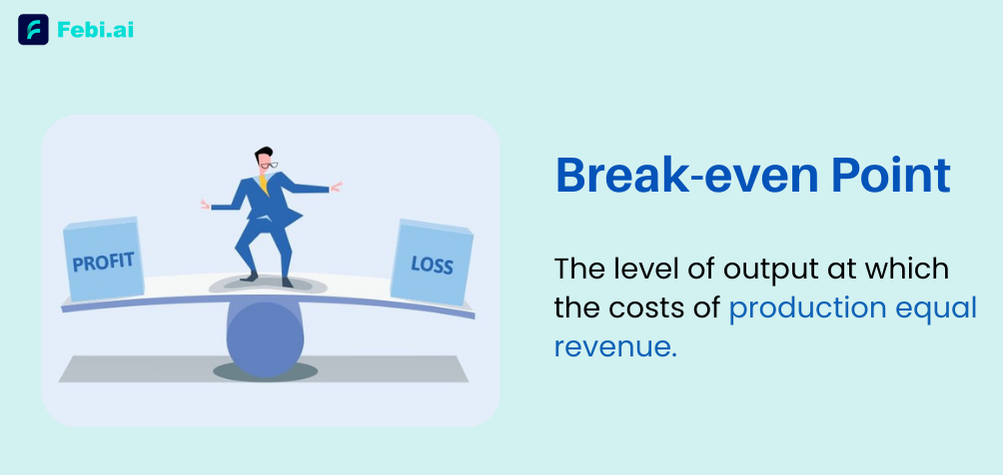
The definition of break even analysis depends on the type of business or startup you are referring to. In case of corporate accounting, the break-even point or BEP defines the stage at which its business operations start to generate profits. Looking at the break even point formula, it is the stage at which total revenue equates with the company’s total expenses.
This break-even point is a crucial milestone for startups as it signals when your business will start generating profit. Knowing this point helps in strategic planning, decision-making, and financial management, making it a cornerstone of startup financial planning.
Break even point formula: Fixed Costs / (Sales Price Per Unit – Variable Costs Per Unit)
Importance of Break Even Analysis for Startups
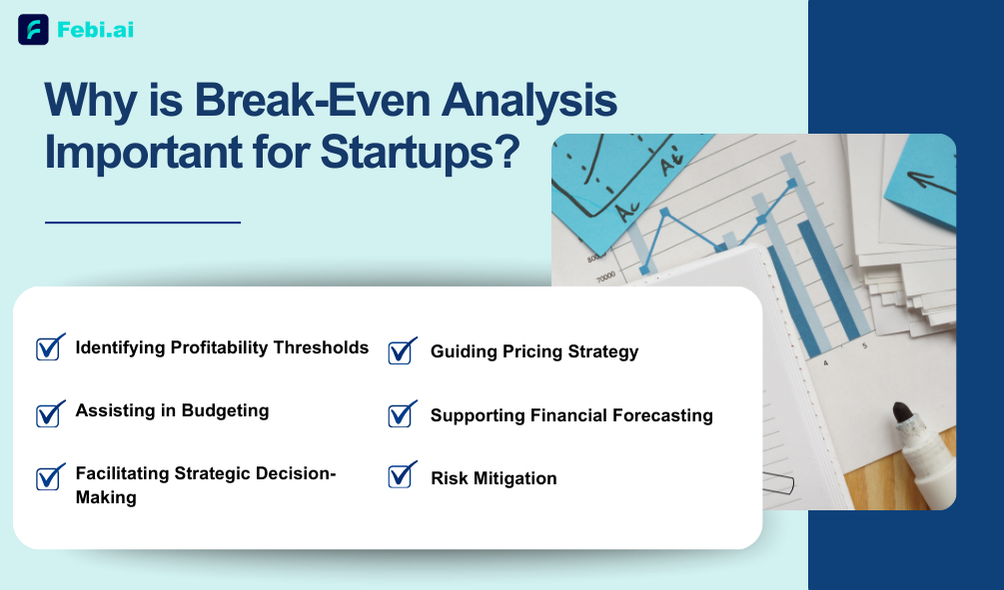
Break-even analysis is essential for startups for several reasons:
1. Identifying Profitability Thresholds
This is one of the top-most reasons why you need to spend time and effort on executing a break-even analysis for your startup. Assessing the profitability threshold of the business, specifically when accounting for the break-even points lets managers identify and set up multiple action plans.
These are generally based on the key rations. For instance, business finance managers and CFOs can use the financial data to establish key financial objectives that further help increase the profits resulting from your product or service.
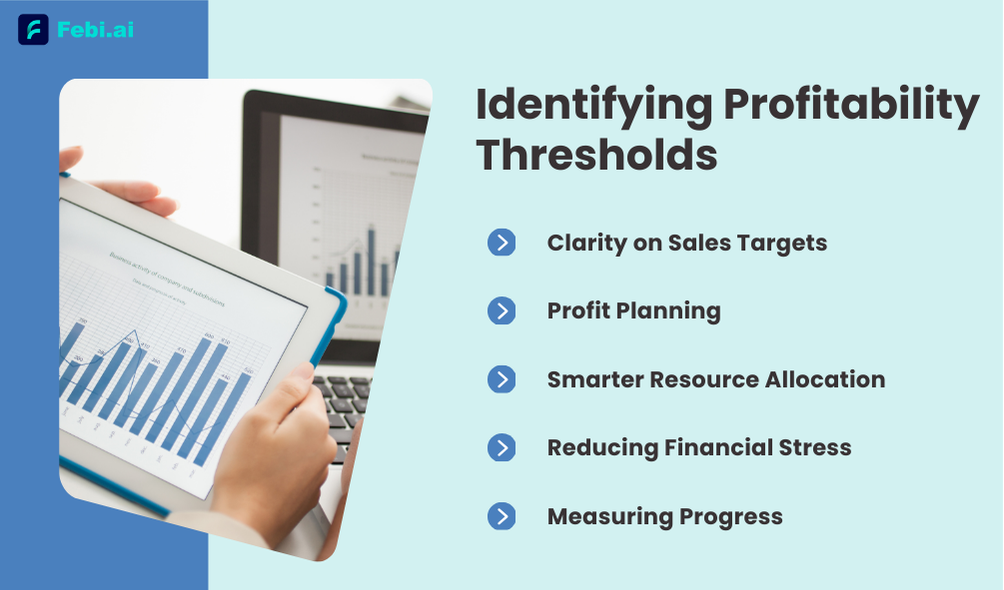
- Clarity on Sales Targets: It helps you pinpoint the exact number of sales needed to cover your costs, enabling you to set realistic and achievable sales targets.
- Profit Planning: By knowing when you’ll start making a profit, you can plan your financial future more effectively.
- Smarter Resource Allocation: Once you know your break-even point, it’s easier to put your resources where they’ll do the most good, helping you grow without wasting money.
- Reducing Financial Stress: Understanding when you’ll start making a profit gives you a heads-up, so you can avoid surprise cash flow problems and tackle challenges before they snowball.
- Measuring Progress: Having a clear break-even point lets you track how well your business is doing, making it easier to tweak things and stay on track toward your goals.
2. Guiding Pricing Strategy

Before we dive into the details, it’s good to keep in mind that pricing is more than just a number—it’s a key part of how your business connects with customers and grows.It informs decisions on setting competitive and profitable prices, ensuring you don’t underprice or overprice your products or services. The right price helps you stay competitive, attract the right people, and ensure you’re not just covering costs, but also making a profit.
Knowing your break-even point gives you the clarity you need to set prices that work for both your customers and your business.
- Competitive Pricing: It informs decisions on setting competitive and profitable prices, ensuring you don’t underprice or overprice your products or services.
- Price Adjustments: Helps you understand how changes in price affect your break-even point and profitability.
- Customer Perception: The right price isn’t just about numbers—it also tells your customers what to expect from your brand. Get it right, and you’ll build trust and loyalty along the way.
- Room to Grow: Knowing your break-even point gives you the freedom to adjust prices as your business evolves, helping you stay profitable while still appealing to your customers.
3. Assisting in Budgeting
By understanding your fixed and variable costs, you can budget more accurately and control expenses. In the business world, this is termed as Cost Control. Further, effective break even analysis helps with resource allocation. You may wonder how?
It guides you in allocating resources efficiently to areas that will contribute most to reaching the break-even point.
4. Supporting Financial Forecasting

Checking the break-even analysis of your business is essential to support your financial forecasting as well. Focusing on future projections offers a solid foundation for making future financial projections, helping you anticipate and prepare for different financial scenarios. Further, it helps boost up investor confidence by demonstrating a clear understanding of your financials.
5. Facilitating Strategic Decision-Making
Decision making is the building block of a successful business. Here is how break-even analysis impact decision-making at startups:
- Investment Decisions: Assists in evaluating the financial viability of new projects or investments by analyzing their impact on the break-even point.
- Operational Efficiency: Helps identify areas where operational efficiency can be improved to lower costs and reach profitability sooner.
6. Risk Mitigation

Knowing your break-even point is like having a clear map to navigate your business’s financial landscape. It helps you spot potential trouble before it hits, giving you the chance to plan and adjust. Whether you’re dealing with slower sales or rising costs, understanding where you stand financially lets you stay ahead of the game. You can put backup plans in place, so if things get tough, you’re not scrambling. It’s all about being prepared and keeping your business steady, no matter what life throws your way.
There are multiple things you need to keep in consideration that influence the break-even analysis of startups. You may want to consider reading this article for a thorough understanding of the essentials Factors That Influence Break-Even Analysis for Startups.
